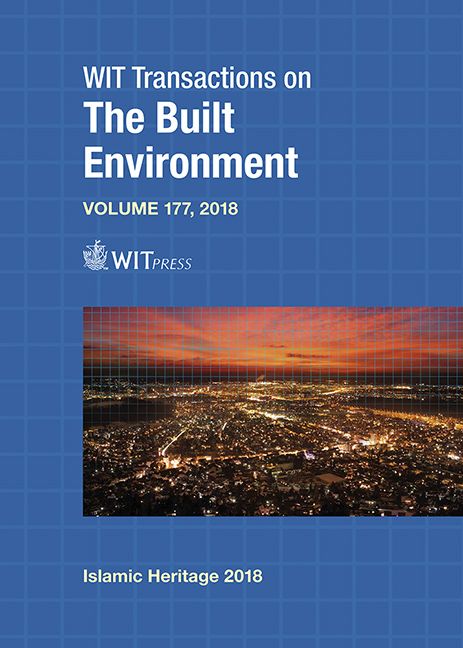EXAMINING THE POTENTIAL VALUES OF VERNACULAR HOUSES IN THE ASIR REGION OF SAUDI ARABIA
Price
Free (open access)
Transaction
Volume
177
Pages
12
Page Range
27 - 38
Published
2018
Size
364 kb
Paper DOI
10.2495/IHA180031
Copyright
WIT Press
Author(s)
HAITHAM SAMIR, ANNA KLINGMANN, MADY MOHAMED
Abstract
Most of the Saudi Arabian regions, in general and Asir in particular, are characterized by traditional settlements, which reflect the social and cultural values of vernacular communities. These communities and their traditional architecture defined, until recently, the nuclei of many cities and towns. The accelerating urban growth and lack of interest of the local population in their vernacular heritage have led to negligence and subsequently to the demolition and removal of many buildings of significant cultural value. As long as such practices persist, cities and towns risk the loss of their identity and cultural diversity. The purpose of this paper is to investigate potential values inherent in the vernacular housing stock of Asiri villages and to allow these structures to become an active part of the contemporary life of cities as well as a valuable heritage resource for future generations. Before deciding on the significance of preserving and safeguarding the vernacular housing stock of the Asiri highlands and the role it may play for present and future generations, it is necessary to have a thorough understanding and acknowledgement of the values emerging from it. Thus, the paper employs an expert appraisal approach through the utilization of a detailed architectural survey, analysis and subjective assessment of two traditional mud houses. The two houses typify the characteristics of Asiri mud architecture. A self-directed questionnaire with a group of local owners of such houses was conducted to investigate whether they see value in their vernacular heritage and whether or not they might be interested in reutilizing their traditional mud houses, which currently sit empty, for contemporary and future applications. This paper points to the significant potential of applying a value assessment as a tool to inform a sustainable conservation practice dependent upon the interplay of social, cultural and environmental values associated with the housing stock of Asir.
Keywords
vernacular architecture, heritage values, Asir region, mud houses




